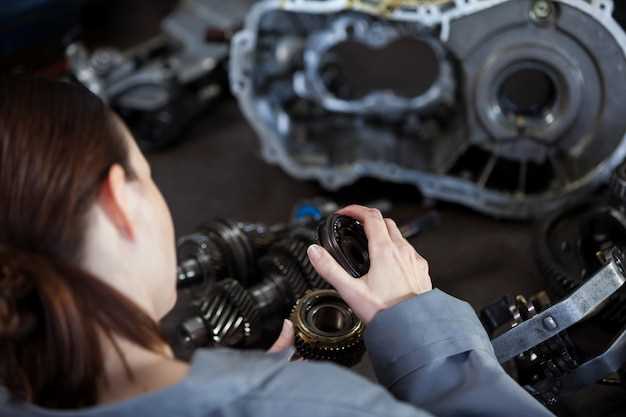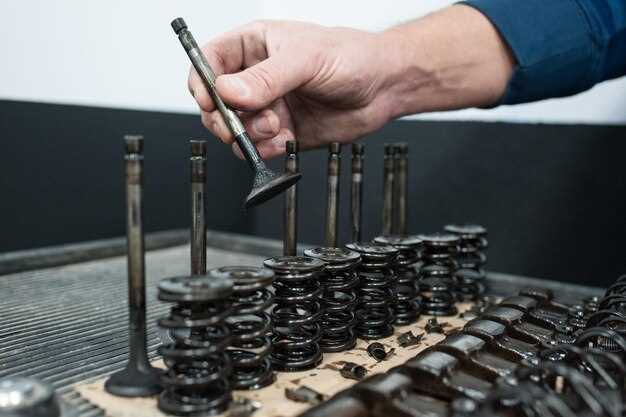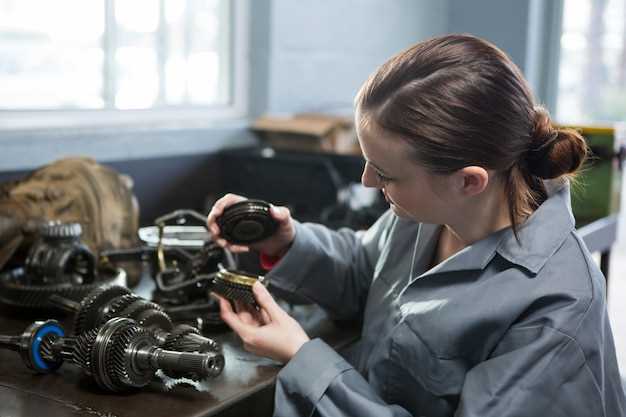How to Check Classic Parts Compatibility

When it comes to maintaining and restoring classic cars, ensuring the right fitment of parts is crucial for both performance and authenticity. The vast array of available components can make it challenging to find the perfect match for your vintage vehicle. Whether you’re a seasoned enthusiast or a newcomer to the world of classic cars, understanding how to check compatibility can save you time and money.
Classic cars often require specific parts that adhere to certain standards, as modern alternatives may not fit or perform as needed. This makes it essential to have access to reliable information regarding part specifications. By focusing on the right parameters and utilizing available resources, you can effortlessly navigate the complexities of fitment for your classic ride.
In this article, we will explore effective strategies and tools that allow you to check compatibility quickly and confidently. You’ll discover tips on how to identify the right parts for your classic car, ensuring that every component works harmoniously together. With just a little knowledge and the right resources, you’ll be well-equipped to preserve the integrity of your automotive treasure.
Identifying Correct Part Numbers for Classic Cars

Finding the right parts for classic cars can be a challenging task, especially when it comes to ensuring proper fitment. Identifying the correct part numbers is essential to maintaining both performance and authenticity.
First, consult the vehicle’s owner’s manual or service manual. These documents often contain a detailed list of part numbers and specifications for different components. Additionally, many manufacturers provide resources online that can be helpful in locating the correct parts.
Next, consider using online databases and forums dedicated to classic cars. Many enthusiasts share information regarding part numbers and sources for specific parts. Engaging with these communities can yield insights into where to find hard-to-locate components.
Another effective method is to inspect the existing parts on your vehicle. Many parts will have a number stamped or printed on them, which can be cross-referenced with manuals or online catalogs. This step ensures that the fitment is precise and reduces the risk of acquiring incorrect parts.
When purchasing parts, always check if the seller provides part number verification or guarantees. Reputable suppliers often offer this information to prevent compatibility issues. If you are uncertain, don’t hesitate to reach out to the supplier for clarification on fitment and part numbers.
Lastly, consider utilizing specialty parts suppliers who focus on classic automobiles. They often have extensive knowledge of vintage models and their corresponding parts. This can dramatically simplify the process of identifying and sourcing the right part numbers.
Utilizing Online Resources for Part Fitment Verification

In the world of classic cars, ensuring that parts are compatible is paramount for maintaining performance and aesthetic appeal. Online resources serve as invaluable tools for verifying fitment and finding the right components for your vehicle.
Numerous dedicated websites offer databases that include detailed specifications for classic car parts. These platforms often allow users to search by make, model, and year, providing precise information on what parts are suited for specific vehicles. Utilizing these resources not only saves time but also helps in avoiding costly mistakes when acquiring components.
Forums and community-driven platforms also play a crucial role in part fitment verification. Experienced enthusiasts share their insights, experiences, and recommendations, creating a collaborative environment where knowledge about classic car parts can be easily accessed. Participating in these discussions can yield valuable information that might not be available through traditional retail channels.
Additionally, many manufacturers and suppliers now maintain online catalogs with detailed descriptions and fitment guides for their products. These resources often include diagrams, measurements, and compatibility information that help users determine whether a part will fit their classic vehicle. Always cross-reference these details with your car’s specifications to ensure accuracy.
Online marketplaces frequently include reviews and ratings from other buyers, which can further assist in assessing a part’s fitment and quality. Reading about the experiences of others can provide a clearer understanding of how well a specific part performs in real conditions.
In conclusion, leveraging online resources for part fitment verification can make the process of sourcing classic car components not only easier but also more reliable. By utilizing databases, community forums, manufacturer catalogs, and reviews, enthusiasts can ensure that they select the appropriate parts for their classic vehicles.
Common Tools and Techniques for Measuring Car Part Compatibility
Ensuring the compatibility of classic car parts is essential for successful restorations and repairs. A variety of tools and techniques are utilized for accurate measurements that determine if parts will fit and function correctly. One of the most commonly used tools is the caliper, which measures the thickness, diameter, or length of parts with precision. Calipers can be digital or manual, offering versatility in different scenarios.
Tape measures are also invaluable, especially when assessing larger components or the overall dimensions of a vehicle. While simple, they provide a quick overview of measurements needed to evaluate compatibility. For intricate parts, a micrometer can be employed to achieve even finer measurements, crucial for components that rely on tight tolerances.
Another key technique is the use of templates and jigs. These aids allow mechanics to replicate specific dimensions and hole placements accurately. By comparing new parts against these templates, users can ensure that they match up to established specifications of classic vehicles.
Digital measuring tools, like laser measuring devices, have also gained popularity. They can quickly and accurately measure distances and dimensions without the potential errors that might occur with manual tools. These devices often come with digital readouts, making it easier to record and compare measurements.
Furthermore, 3D modeling and printing have emerged as innovative ways to assess compatibility. Using 3D scanning technology, car enthusiasts can create digital replicas of existing classic parts. This allows for precise alterations and the production of custom parts that will fit seamlessly.
Finally, consulting parts catalogs and manufacturer specifications is vital. These resources provide detailed information about compatible components, ensuring that any replacements or upgrades maintain the integrity and performance of classic cars.



